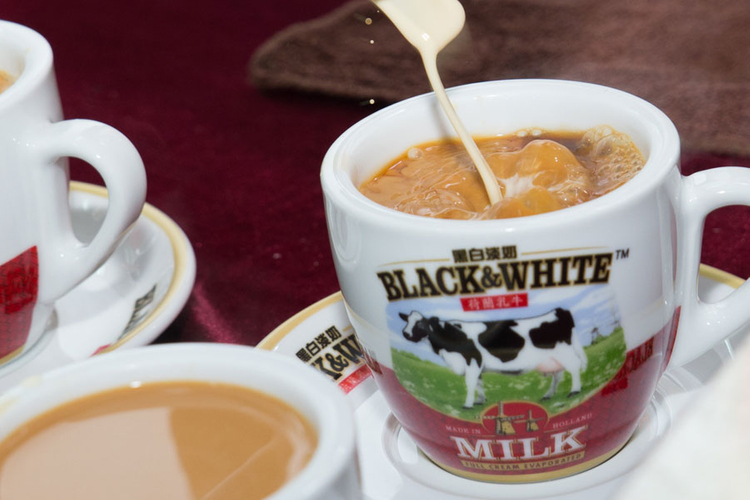Historic Fusion Food that Still Thrives in Hong Kong
With such an interesting history, what are some Hong Kong foods that transcend multiple cultures?
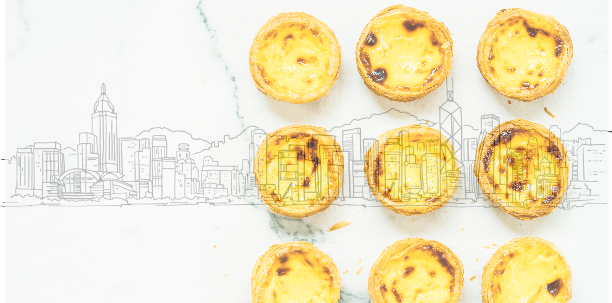
快速瀏覽
Get the free infographic for this topic here
Hong Kong, an International City
Hong Kong, often referred to as Asia's World City, is known for its multicultural and international image. The city is home to a multitude of people from all over the world and is even viewed as a gateway to Asia. Given Hong Kong's global spirit, it is little surprise that much of its food, even things that seem completely local at first glance, are actually a fusion between east and west. Let's take a look at some of Hong Kong's most iconic fusion foods that you may not have known have international roots.
Bread and Pastries
Pineapple bun
The pineapple bun was actually listed as part of Hong Kong's intangible cultural heritage in 2014. Despite its name, the pineapple bun contains no pineapple, but rather has a crispy top that resembles the look of a pineapple. Sweet in flavour, the pineapple bun is often served with a small slab of butter within, as a variant to the traditional version. It is believed that pineapple buns are variants of hot cross buns, popular among British colonialists.
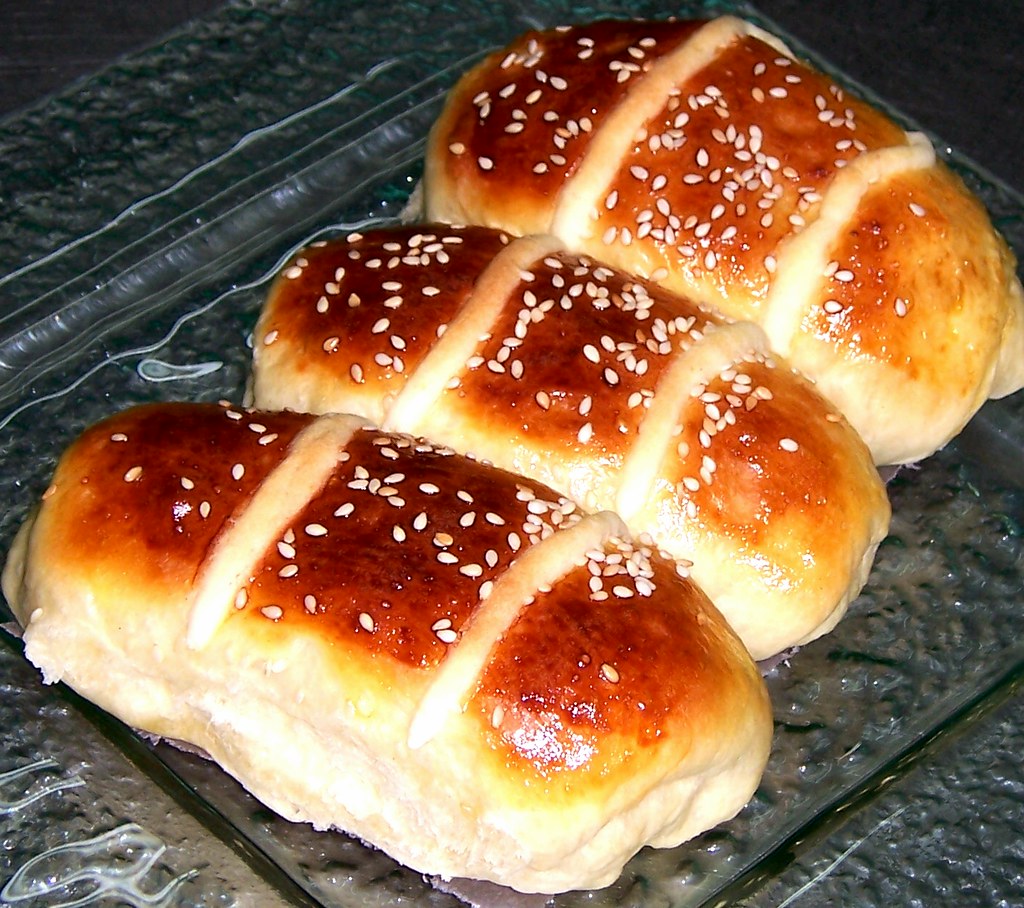
Cocktail Bun
The cocktail bun is a combination of sweet bread and a shredded coconut center. There are several stories about how the cocktail bun was created, but one of the most prominent stories is that bakeries would refuse to waste day-old bread and instead grind it up with shredded coconut and sugar to use it as a filling for the cocktail bun. The cocktail bun also traces its roots to British colonialism as the bread used is a sweeter variation on western bread that was introduced to Hong Kong by the British.

Mexico bun
What many people don't know is that the Mexico bun actually has its roots in Mexico. In the 19th century, many Chinese men sought to make better lives for themselves overseas, and since immigration was banned in many English-speaking countries, Mexico became one of the destinations Chinese migrants traveled to. Mexico welcomed Chinese immigrants and even allowed mixed-race marriages, something that was not allowed in many English-speaking countries at the time. In the 1930s, amid a wave of anti-Chinese hysteria, Mexico's Chinese men were deported back to China and their families were subsequently stripped of Mexican citizenship. It is believed one of these deported families, the Ng family, developed the Mexico bun in 1946 as a tribute to Concha, a traditional Mexican bun with a sweet crust.

Egg Tart
Egg tarts first began to appear in Hong kong around the 1940s. It is believed much of the inspiration came from Macau, which was under Portuguese rule at the time. The original pastel de nata egg tart was served in cha chaan tengs (local Hong Kong restaurants) that specialized in western cuisine. The British also played their part by introducing cold custards to Hong Kongers. These influences were enough for local bakers to create early versions of the egg tarts that have become a staple all over Hong Kong these days.
Main Dishes
Sizzling Steak
Hong Kong's sizzling steaks are a local favorite, but are actually adapted from traditional western steak to suit local tastes. Steaks were first served in Hong Kong restaurants around the 1980s when several western restaurants opened up to cater to western expats and foreign sailors who were not used to local cuisine. Initially, these restaurants were not affordable to the local Hong Kong populace, but over time, more and more Hong Kongers were able to afford these western meals and restaurants began to cook for an entirely new clientele. To attract more locals to visit, restaurant owners added steak to a hot iron plate, causing the sauce to sizzle enticingly while also creating an inviting smell. This theatrical touch endeared itself to Hong Kongers and now is a mainstay in Hong Kong restaurants.

Russian Borscht
If a Hong Kong restaurant has soup on offer, there is a high chance that there will be a Russian borscht option. The Hong Kong version of Borscht varies a lot from the traditional Russian recipe. For one, there are no beets in Hong Kong borscht and there is also no sour cream. Borscht grew in popularity in Hong Kong during an often-forgotten era of Hong Kong history saw a sizeable Russian population passing through the city. the history of how so many Russians moved through Hong Kong is an interesting one. Initially, Russians began to emigrate to China in the in the early 1900s - after the Bolshevik Revolution led to the collapse of the Russian Empire. By around 1920, there were 300,000 Russians living in China. When the Japanese invaded China in 1937, a few Russians moved to Hong Kong. However, it was after World War 2, during the Communist Revolution, that Hong Kong saw its largest volume of Russian influence. In all, "about 20,000 Russian refugees passed through Hong Kong in the decades after World War II." During this time, Hong Kong's Russian population left its mark on the city, popularizing dishes like borscht, chicken kiev and beef stroganoff.
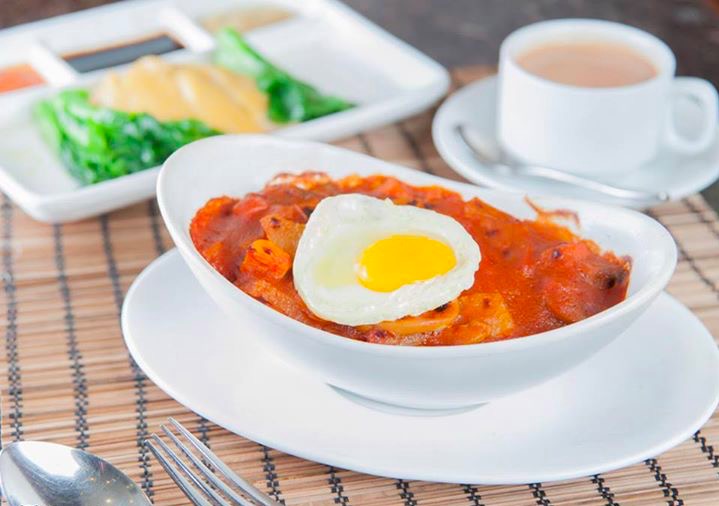
Fusion Bakes
Baked dishes are popular among Hong Kong locals and often combine a fusion of local and western ingredients. One of the most popular variants sees a fascinating blend of sunny side up eggs, pork chop, Hong Kong fried rice and tomato sauce all merged into one amazing amalgamation of flavors. The eggs and pork chop make up the western portion of the dish while the fried rice represents the Hong Kong side of the dish.
Drinks and Snacks
Hong Kong-Style Milk Tea
Hong Kong-style milk tea is an adaption of typical British tea that was consumed during Hong Kong's colonial era. It originated from the British practice of drinking afternoon tea, where black tea was consumed with milk and sugar. The Hong Kong version does away with regular milk and replaces it with condensed milk for extra silkiness and sweetness. Hong Kong milk tea is also often served cold as a great way to beat the city's sweltering summer heat.
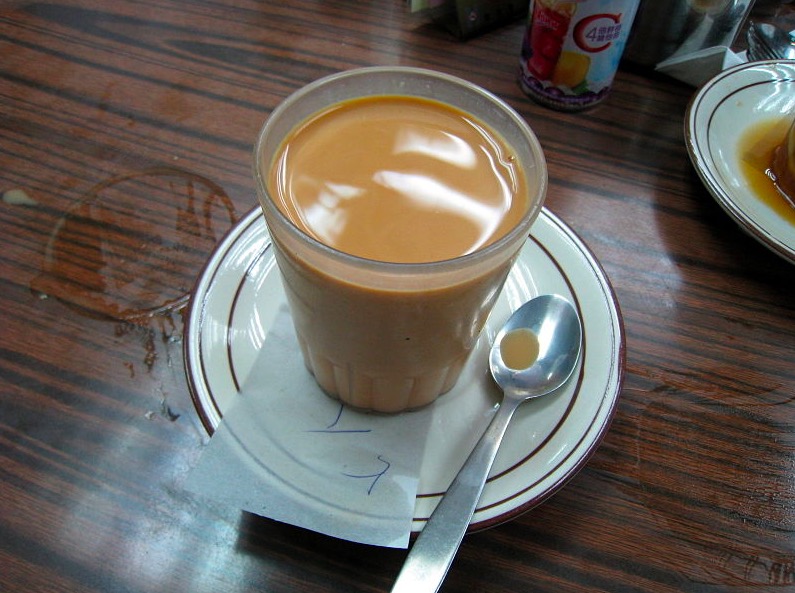
Yuen Yueng
Yuen Yueng is a wonderfully specific and delicious local drink that also traces its roots back to colonial Hong Kong. Essentially, Yuen Yueng is a mix of Hong Kong-style milk tea (7 parts) and coffee (3 parts). It is said that during Hong Kong's colonial era, local British and Chinese citizens wanted a stronger, more-caffeinated version of Hong Kong milk tea. Thus, Yuen Yeung was created! The name Yuen Yueng references mandarin ducks, a species where the male and female look starkly different from one another. Like Yin and Yang, the two ducks represent seemingly incompatible opposites coming together as a harmonious whole. In the same way, Hong Kong milk tea and coffee -two ingredients that don't seem to work together- are actually combined to form this delicious beverage.

Hong Kong Egg Waffle
The Hong Kong egg waffle, with its unique appearance and signature flavor, was ranked as number 1 in a recent Hong Kong street snack listing. It is believed that Hong Kong egg waffles first originated around the 1950s and their creation is a Hong Kong rendition of western waffles. There are some interesting theories about how the Hong Kong waffle came to be. One theory suggests that street vendors purchased cheap, broken eggs for for the batter, which is why Hong Kong waffles have a golden color. Another theory is that the special iron skillet, with its egg-shaped compartments, was developed after World War 2 because eggs were a luxury at the time in Hong Kong, and the egg-shaped waffle compartments would psychologically compensate for the eggless batter.


